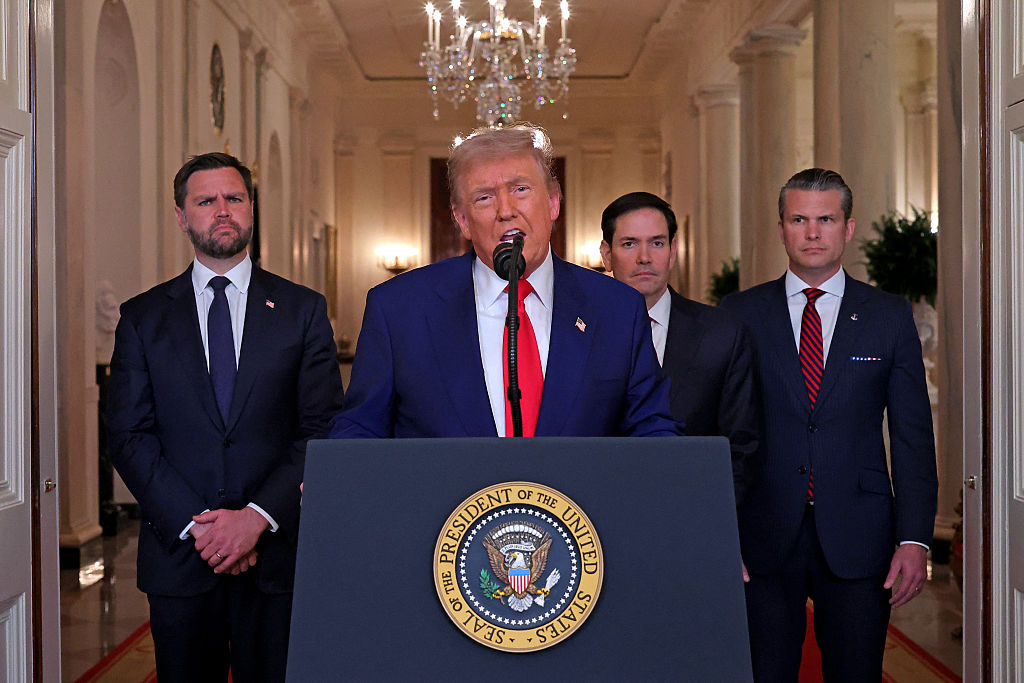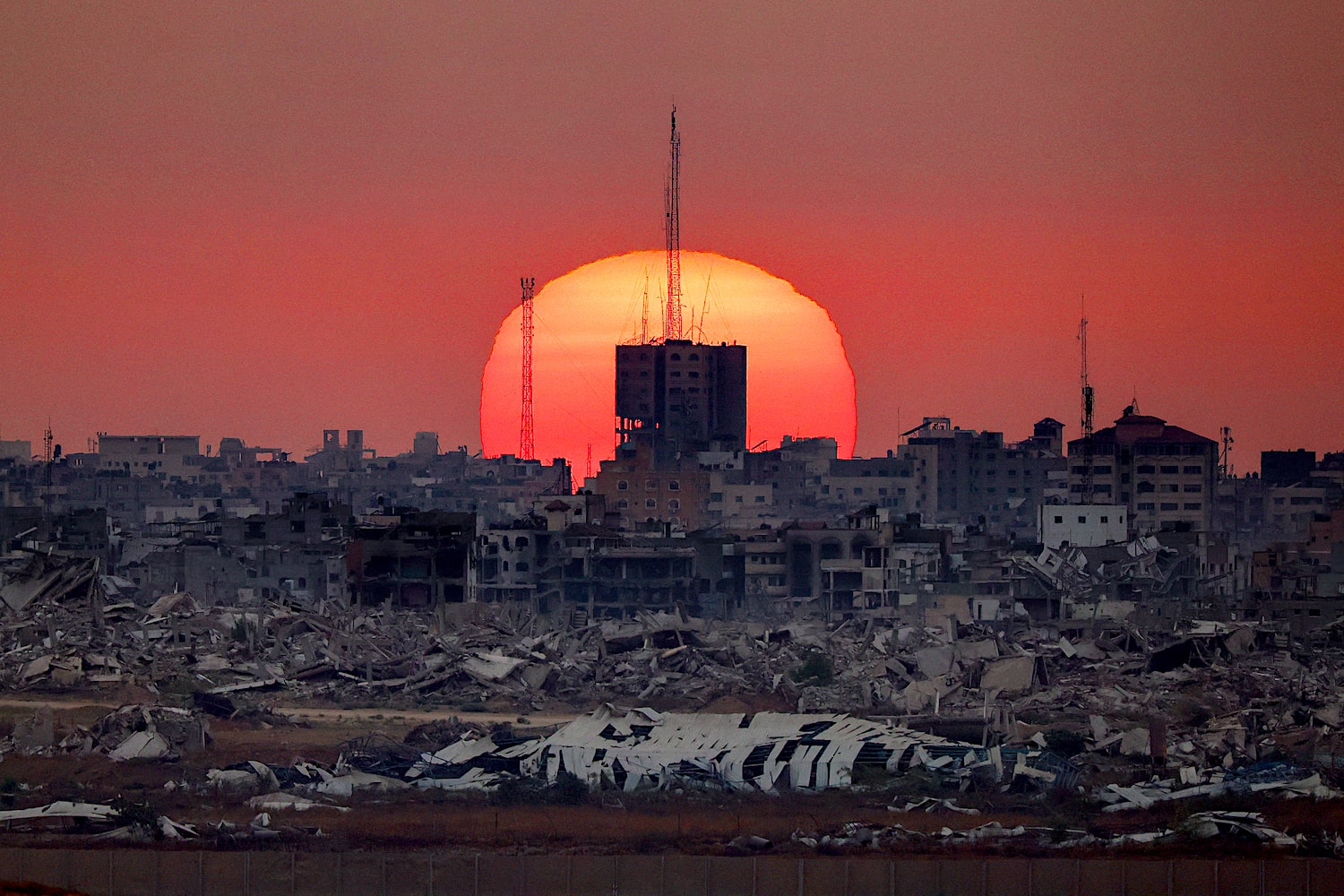Question: When is a New York Times exclusive not a New York Times exclusive? Answer: On Sunday, when America’s paper of record stole my scoop.
It sounds bizarre, but it’s true. Last February, I revealed top-secret details of the killing of the Iranian nuclear scientist Mohsen Fakhrizadeh in the pages of London’s Jewish Chronicle, the world’s oldest Jewish newspaper.
Among the revelations — given to me by impeccable sources that I know well — were that the top Tehran official had been killed by Mossad using a remote-controlled gun that weighed one ton and had been smuggled into Iran piece by piece over several months.
The reason, I disclosed, for such a complicated method of assassination was to achieve hyper-accuracy, since Fakhrizadeh was sitting in the car next to his wife, and she was not to be harmed.
The Mossad team comprised more than 20 operatives, including both Israeli nationals and Iranian allies. They shadowed Fakhrizadeh for eight months (‘they would have smelled his aftershave every morning, if he had used aftershave’, one source said), formulating the perfect plan.
On November 27, 2020, the attack took place. Fakhrizadeh was killed in his black saloon, in the midst of a convoy of 12 bodyguards, while sitting just 10 inches from his wife.
He was hit by 13 bullets. Nobody else was harmed. The remote-controlled weapon — which weighed so much partly because it was equipped with explosives — blew itself up immediately after the hit.
The scoop was a sensation. It was followed up on by newspapers all over the world, and dominated the nightly news bulletins in Israel. I was interviewed by several television channels, including Sky News and the BBC. Bizarrely, the Jewish Chronicle gained many readers in Iran.
Reuters, the world’s largest multimedia news provider, covered the story with the headline ‘Iranian nuclear scientist killed by one-ton automated gun in Israeli hit: Jewish Chronicle’.
Some Israeli journalists, including a chap from the Jerusalem Post, demanded to know my sources. When I refused to disclose them, they wrote sour-grapes stories suggesting I’d made it all up. I laughed about that for a while.
But the smile was wiped off my face on Sunday, when the front page of the New York Times — that bastion of journalistic ethics — trumpeted an ‘exclusive’ of its own.
‘The High-Tech Killing of a Nuclear Scientist’, ran the headline. ‘Israeli agents had wanted to kill Iran’s top nuclear scientist for years. Then they came up with a way to do it with no operatives present.’
Written by the Israeli journalist Ronen Bergman (who has published a book about the Mossad resting largely on powerful, anonymous quotations) and his Iranian colleague Farnaz Fassihi, the rather clunky article was largely a rehash of my February story. It ran for 4,000 words, yet had no room to credit me or my paper.
To make matters worse, this, the New York Times claimed, was a ‘straight-out-of-science-fiction story of what really happened that afternoon and the events leading up to it, published here for the first time’.
For the first time, huh. These investigative journalists had clearly failed to investigate Google, or they would have found that the story had been told before.
Most of Bergman and Fassihi’s work of genius was a meandering account of the background to the hit. But when it comes to the substance, here are the new details that the pair of Sherlocks added to my original scoop:
- The remote-controlled weapon was based on a 7.62mm caliber, Belgian-made FN MAG machine gun
- It was ‘hidden beneath tarpaulins and decoy construction material in the truck bed’
- There were cameras on the truck, as well as on a broken-down car along the road
- The artificial intelligence system was designed to compensate for transmission delay and shake
- The automatic gun did not properly self-destruct
- There was a stray dog on the road
Maybe I’ve missed one or two things. But aside from that, the New York Times journalists simply copied my story and added what is known as ‘color’. And the color they chose spoke volumes.
Fakhrizadeh, the man responsible for pursuing the means for the genocide of Jews, woke before dawn most days ‘to study Islamic philosophy’, the New York Times told us.
Despite his ‘prominent position’ in the murderous regime’s hierarchy, the authors added, the fanatic ‘craved small domestic pleasures: reading Persian poetry, taking his family to the seashore, going for drives in the countryside’.
He also routinely refused to be driven around in an armored car, preferring to drive his own car and ‘disregarding the advice of his security team’. So modest.
The journalists even went to great pains to ensure that we pronounced his name respectfully and correctly in our heads (‘fah-KREE-zah-deh’, they wrote).
By the time I got to the end of the story, it had become a tale of a kind of Iranian Gandhi, shot down in cold blood by murderous Israeli spies. The fact that Fakhrizadeh was committed to the ideal of mass murder was not mentioned.
‘Iran has steadfastly insisted that its nuclear program was for purely peaceful purposes and that it had no interest in developing a bomb’, the New York Times reminded us.
‘Ayatollah Khamenei had even issued an edict declaring that such a weapon would violate Islamic law.’
Wait. Isn’t Tehran the place where they hang gays from cranes? And isn’t Iran the foremost sponsor of terror in the region? And don’t we already know that the regime was lying about its nuclear… Oh, forget it.
The New York Times did find the time to credit one source, however: the Fars News Agency, a mouthpiece for the Iranian regime, for contributing the important detail that three bullets hit Fakhrizadeh’s spine. So what was it about the Jewish Chronicle that they didn’t like?

























